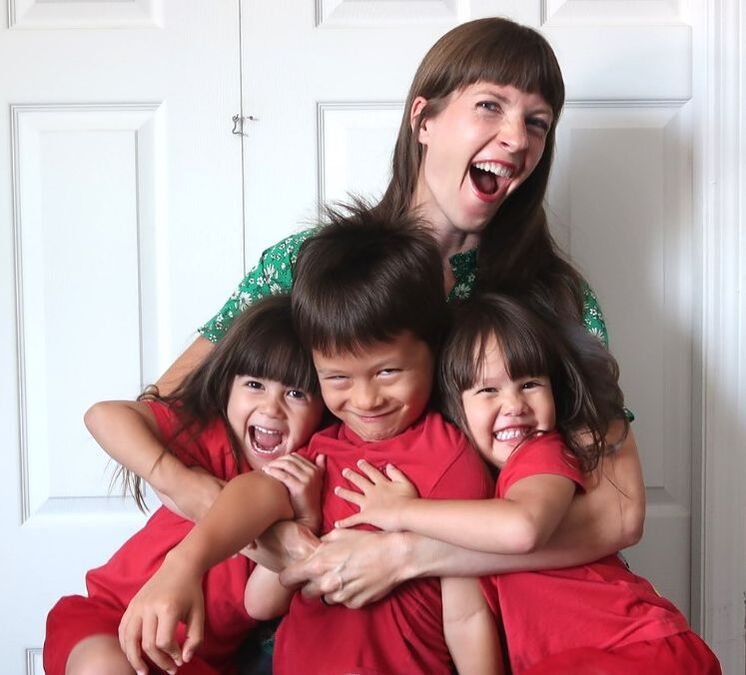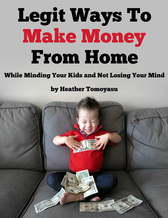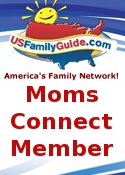|
Contributed post.
Thinking about taking the whole fam on a trip south of the border? Awesome choice! Mexico’s got it all - stunning beaches, ancient ruins, and don’t even get me started on the food. (Mmm, tacos…) Let’s dive into planning your dream family getaway. When to Go The First thing we should talk about is timing. Mexico’s weather can be a bit tricky, depending on where you’re headed. Here’s a quick rundown:
Pro tip: If you can swing it, September and October are sweet spots for great weather and smaller crowds. Where to Stay Alright, now for the fun part - picking your home away from home! Mexico’s got options for every family and budget:
Here’s a handy table to help you decide:
What to Do
Now, let’s talk activities! Mexico’s packed with family-friendly fun:
Don’t forget to check out some tours to Mexico for hassle-free exploring! Packing Essentials Alright, it's time to stuff those suitcases! Here’s what you shouldn’t forget:
And maybe leave a little room for souvenirs, yeah? Safety First I know, I know - not the most exciting topic. But it’s important, especially when traveling with kiddos. Here are some quick tips:
Budget-Friendly Tips Vacations can get pricey, but there are ways to stretch your pesos:
Getting Around Exploring a new country with kids in tow can be… interesting. Here are your options:
Language Basics Knowing a few Spanish phrases can go a long way:
Your kids might even pick up some new words - how cool is that? Food Adventures Oh man, Mexican food. It’s way more than just tacos (though those are pretty amazing). Here are some family-friendly dishes to try:
Just a heads up - some dishes can be spicy, so ask before ordering for the kiddos. Embrace the Culture Last but not least, don’t forget to soak in the vibrant Mexican culture:
It’s these experiences that’ll stick with your family long after the vacation’s over. The Bottom Line And there you have it! Your guide to planning an unforgettable family trip to Mexico. Remember, the key is to relax and go with the flow. After all, it’s about making memories with your loved ones. So pack those bags, brush up on your Spanish, and get ready for an amazing adventure. ¡Buen viaje!
5 Comments
Contributed post.
Camping is certainly an incredible hobby for all ages. It gives you the chance to escape the hustle and bustle of daily life whilst immersing yourself in the beauty of nature. However, while it has many great benefits, it also comes with certain risks. The wilderness is unpredictable, and you may run into several challenges during your adventure. In this article, we are going to discuss five crucial tips so that you can have an enjoyable and safe experience. Let's begin! Craft an emergency kit. The first thing you should do before going on a camping trip is craft an emergency kit. While you may have all of the standard equipment crossed off your list such as shelter and food, there are many other things you will require. For instance, a map, flashlight, extra batteries, first-aid kit, and water purification tablets are all essentials that you should keep on hand. It's always better to be overprepared than underprepared. Additionally, you may want to look further into hatchets for camping. This tool can be valuable in all types of emergency situations. Familiarize yourself with basic survival skills. Alongside having the necessary gear for your trip, you should also take the time to brush up on your survival skills. If you become lost or are injured, these abilities can mean the difference between life and death. A few skills that you should learn include:
There are a wide range of courses online to help you get started. Of course, you should also get some real-life experience before your adventure begins. Research your campsite in advance. Familiarizing yourself with your campsite can significantly enhance your safety. Before you set up your tent and equipment, do a quick survey of the area, or better yet – research before your departure. Check for hazards such as unstable trees, rocky terrain, and areas prone to flooding. It’s also wise to locate any emergency exits and nearby water sources. Know the weather forecast. Weather conditions can change rapidly in the wilderness. Always check the weather forecast before your camping trip so that you can plan accordingly when it comes to your clothing and required supplies. It’s also best to monitor for updates using a portable weather radio or smartphone app. Understanding patterns can prevent many emergencies before they happen. Share your itinerary. Even if you consider yourself a camping expert, always inform someone about your plans. Share your itinerary with a trusted friend or family member, and update them if anything changes. Be sure to include a lot of details, including location, duration of the trip, and names of everyone in your group. This way if an incident does occur, they will be able to locate you more easily. Final Words Camping is a wonderful way to enjoy the great outdoors, but you should always be prepared for emergencies. While the chances of anything going wrong are slim, mistakes and accidents can still happen. By following the advice above, you can ensure a safe and fun camping experience.
Contributed post.
If you’re looking for some great home projects that could save you money, look no further than ways to make your house safer. Unlike those intimidating home improvement jobs, these projects can (usually) be finished in an afternoon, meaning you can enjoy the benefits immediately. So it doesn’t matter if you have kids or pets or just want to make your home feel safer and more secure, here are some great projects to consider. Install Security Systems Many homeowners use security cameras to protect their property. If you haven’t done so yet, it could be time to install cameras and lights to ensure your home is safe. These accessories can provide a functional benefit and act as a general deterrent, which could protect your neighbors, too. It’s worth researching the best security light placement to ensure you cover all possible entrances, while your cameras should focus on the front and back of your home to capture any would-be burglars. Secure The Property You should also find ways to secure your property to make it more challenging for intruders to gain access. Much like security systems, this deters them from even trying to get into your home, so choosing robust tubular fencing to surround your property can make a huge difference without making it feel like you’re blocked in like you would paneled fences. These additions can make you feel safer and help you sleep better, especially if you use a heavy padlock on your driveway gate to make access even harder. Clear the Garden Your garden could contain plenty of hazards you’re not even aware of and since you want to use it as much as possible over the summer, it’s worth clearing it to make it safer and more enjoyable. Take some time to clear any garden debris and mow the lawn. You can also trim bushes and hedges. If you work in the garden regularly, have a place to store your tools when you’re finished rather than leaving them outside. Fix Rickety Furniture There is nothing better than sitting on the porch at sunset, but you don't want to sit on wobbly chairs that threaten to throw you off at any moment. The good news is that fixing these chairs and other furniture is easy as long as you have some glue and tools. Use the super glue to secure any loose fittings or tighten screws to prevent legs or chair backs from wobbling. This will give you more support and stability to enjoy your evenings without worrying about falling over. Lay Carpets If you’ve got pets, kids, or elderly relatives visiting over the summer, you can lay carpets around the house to make your sleek hardwood floors safer. Carpets provide better grip, meaning there’s less chance of slips or falls so everyone can walk through the house confidently. However, these don’t need to be permanent. Use carpet tape to secure them in place and remove them when you don’t need them anymore. Safe Home Everyone deserves to feel safe and risk-free in their house. These projects focus on potential hazards, including burglaries and slips, trips, or falls to make your home as secure as possible.
Contributed post.
Medical science only goes so far after having a baby. Of course, it is valuable. However, new mother holistic therapies can help you find baby bliss and manage with minimal stress. From body treatments to ways to focus your mind, here are some alternative suggestions. Embracing the Holistic Approach First, you need to understand that a holistic approach to managing life in general can have stunning positive results. Medical science and doctors are excellent at advising specific things. But they aren’t there when you feel anxiety, stress, and loneliness. Support is a powerful way to cope with massive life changes. There are many unplanned pregnancy help support groups online. Just talking with others and reciprocal care will help when medical science cannot. Treatments for the Body Now for the fun stuff. There are tons of holistic therapies that can help you feel much better about yourself, life in general, and your situation. Something as simple as a massage can be just what you need to recharge and feel vibrant. If you are feeling the aches and pains of childbirth, treatments like acupuncture are believed to refocus energies and relieve chronic pain. Homeopathic remedies are also used by many new mothers to treat symptoms like nausea. New Mother Holistic Therapies at Home Parenting when you have a new baby can be a challenge. While getting to milestones, there are home treatments you can do. Maybe you have anxiety after childbirth. You aren’t alone. A study in Australia found that 30% of new mothers experience this. So what can you do? Some of the easiest ways to relieve anxiety with holistic treatments are easy. These include aromatherapy and drinking herbal teas. Some also find anxiety relief by keeping a journal taking the baby out. Focusing the Mind There is a distinct link between healthy minds and healthy bodies. Fortunately, like the body, there are many holistic treatments you can try to focus the mind. Most of these are easy to do but require some time and dedication to get the most from them. One of the most useful is meditation. There are all types of meditation, such as guided meditation, which is the best for beginners. Apps such as Headspace offer various exercises to suit different lifestyles. Exercise and Physical Activities Pregnancy takes its toll on your body. Getting back into shape after a baby is not easy. However, with some self-care and dedication, you can achieve excellent results. Exercises such as yoga are practical for strengthening core muscles and will help get your stomach muscles back to normal. Other muscles, such as the pelvic muscles and the vagina, can also be damaged. Simple pelvic exercises alongside gentle jogging will relieve pain and gain strength. Summary Embracing holistic therapies such as support as a lifestyle choice helps make the fourth trimester easier. Home remedies such as aromatherapy are easy to do and cost little. Other beneficial at-home activities include yoga, meditation, and even drinking herbal teas.
Contributed post.
Do you want to stand out when it comes to fashion? Maybe you want to experiment but you just don’t know how to get started. Either way, if this sounds like you then there are a few things you can do to try and turn things around. Mix and Match Textures Mixing different textures is often the best way for you to make your outfit stand out. The main reason for this is that it helps to add both depth and contrast. If you mix a silky blouse with a nice velvet skirt then the two fabrics will work with each other to create something that truly catches the eye. It will also help to make your outfit much more unique and memorable. If you want to take things to the next level, another thing you can do is try and combine different textures in your own individual way. If you do this then you will soon find that you can express yourself and your personality. Invest in Accessories Unique accessories are one of the best ways for you to make your outfit look the part. You can make your outfit look striking by simply adding some unexpected elements. Choosing bold or even interesting statement pieces is often the best way for you to look the part. You can also draw attention to your ensemble and this will help you to make a solid statement. By doing this, you can push the boundaries with what you love about fashion and you can also make sure that you are always one step ahead of any trends. If you are lacking accessories right now then one thing you can do is invest in industrial piercing jewelry. When you do this, you will soon find that it becomes easier for you to get the result you want out of your fashion game. Layer Different Pieces Layering different pieces is one of the best ways for you to add visual interest to the outfits and dresses you have. You may also find that this technique is the best way for you to add patterns and colors for a more eclectic look. You will soon find that you can express your personal style with ease and this is great, to say the least. Layering your outfit also gives you the chance to mix unexpected hues together so you can get a unique edge that helps you stand apart from the crowd. Of course, if you want you can even mix things like navy and pink together which is the best way for you to surprise yourself. Play with Proportions By experimenting with different things, you will soon find that it is possible for you to create a bit more of a unique silhouette and this can work in your favor more than you realize. Of course, if you have an oversized sweater, it may be that you combine this with a pair of nice voluminous trousers, so you can make an unexpected look that really gives you a unique appearance overall.
Contributed post.
Your kids' eyes light up with excitement as they experience a vibrant new culture. You see their faces filled with wonder as they explore ancient ruins. These are the moments that make traveling with kids so worthwhile. Yes, there might be a few tantrums or lost socks along the way, but the memories you'll make together are worth their weight in gold.
This guide is your roadmap to incredible family travel. Learn how to plan stress-free adventures, embrace the surprises, and create unforgettable moments with your kids. Preserve Priceless Memories with Tech Technology offers incredible ways to preserve the moments that matter most. Here's how to make technology work for those unforgettable moments:
Chart Your Family Adventure Getting kids involved in the planning stages is a genius move! Let them help choose a place to stay or pick a few activities they're excited about. This builds anticipation and makes them feel like part of the adventure. Age matters! A toddler will love the thrills of a theme park, but teens might be more interested in exploring cool cities with a rich history. Tailor your destination to your kids' ages for maximum fun. Refrain from cramming your days with activities. Leave room for ice cream breaks, naps (for everyone!), and spontaneous discoveries. Those unplanned moments often become the most treasured memories. Roll With the Changes Sometimes, travel goes differently than you planned. Missed flights, sudden downpours, a grumpy kid at the museum – these things happen! The key is to roll with the punches. A flexible attitude lets you turn mishaps into hilarious stories. Don't be afraid to wander off the beaten path. Sometimes, the best family memories come from unexpected detours. Get a little lost in that charming town. Follow that trail to see where it leads. These unplanned moments might lead to your favorite discoveries. Flexibility is not just for the parents. Teach your kids that it's okay when things change. They'll learn to adapt and find joy in the unexpected, a valuable skill for both travel and life! Keeping Everyone Happy and Engaged
Disconnect to Truly Connect Traveling is the perfect time to ditch the screens and truly focus on each other. Put those phones away and soak up the laughter, the conversations, and the inside jokes only your family would get. Leave the social media updates for when you get home. Trying new things together builds an incredible bond. Whether it's a weird-looking fruit at the market or navigating a crowded subway, shared experiences bring you closer. The best souvenirs aren't bought in a shop. They're the memories you make – the time your kid finally conquered a waterslide or the silly song you all sang at the top of a mountain. These moments will stay with your family long after the tan lines fade. Conclusion Planning helps, but don't sweat the small stuff. Roll with the changes, laugh at the mishaps, and focus on those precious moments with your family. Go ahead, brave mama! Book the trip, pack the bags, and get ready for adventures. Those amazing memories are just waiting to be made! Contributed post. Academic achievements are not easily earned. And there is a lot of pressure on kids these days to do better at school. But pressure doesn’t help. So, from being supportive of failures to rewarding effort, here are some valuable insights into helping your kids do better at school.
Commit to External Support A lot of children need extra support when it comes to school. Every child is different, and they all learn at different speeds and levels. Many parents find it helpful to hire extra support, such as math tutors or language teachers. This is an excellent way to boost a child’s understanding. But what of SEN kids? Fortunately, there are special people, like an autism therapist, who can help. Individual focus on your child will help them reach their full potential for better school results. Teach that Failure is Part of Learning When you fail at something, you only learn another way, and it can’t be done. That’s it! Failure is a part of learning and should be accepted as doing something right but without the intended results. Nobody is born with the ability to do something, and we all start somewhere. Remember, “if at first you don’t succeed?”. Children will fail at things. You can encourage them to get back on the horse and give it another go. This builds confidence and child positivity. Academic Achievements through Self-Care Further to anxiety, just like adults, children feel this terrible emotion too! One study found that 33% of students potentially become anxious to the point where it affects their classroom performance. We must pay as much attention to the mental well-being of children as we do to ourselves. Teaching kids some self-care practices, such as stress reduction and recognizing their emotions, will help them overcome anxiety. A good skill they can use throughout life! Reward the Effort Instead of Punishing the Grade Is it really worth adding to the stress a child is feeling by criticizing grades? When children put the effort into something, they must be praised for it. Making them feel bad for not getting the result you want will only discourage them from trying. However, recognizing how hard they have worked gives them the confidence boost they need to keep trying. Who knows, they might just get that better grade next time. But they won’t if you only put them down after the first try! Encourage a Learning Mindset Most kids will want to play all the time. Today, that means video games, a favorite sport, or scrolling social media! So, instead, they must be encouraged to learn in and out of class. Limiting screen time in favor of a book lesson will help them improve reading, writing, and language skills without even realizing it! This needs to be something they enjoy. Laying down the rules for a certain amount of studying each day will also help them comprehend. SummaryFinding extra support for your kids can help encourage academic achievements. Self-care is also vital and will help children manage emotions such as anxiety in a better way. It also helps to promote a learning mindset where the kids choose mental stimulation over pastimes.
Contributed post.
Los Angeles isn't just a destination; it's a lifestyle. From the iconic Hollywood sign to the beautiful beaches of Santa Monica, life here is about enjoying the outdoors, exploring diverse cuisines, and possibly bumping into a celebrity at your local café. From one bedroom apartments in Downtown Los Angeles to luxury family homes, there's something for everyone here, so let's explore more about the LA lifestyle.
The Weather: Sunny Days Ahead Enjoy the Sunshine One of the top perks of living in LA is undoubtedly the weather. With over 300 days of sunshine a year, Los Angeles offers a mild, generally warm climate that is perfect for outdoor activities year-round.
Cultural Melting Pot: Embracing Diversity A Rich Tapestry of Cultures Los Angeles is a mosaic of cultures, making it one of the most diverse cities in the world. This diversity is celebrated through numerous cultural events, art shows, and an incredible variety of global cuisines.
Everyday Living: Mobility and Convenience Easy Navigation Despite its reputation for traffic, LA offers a variety of ways to get around, including a developing public transit system and numerous bike lanes. Many residents find living close to work or using alternate transit options makes commuting easier.
Lifestyle and Leisure: Living the Dream Housing and Neighborhoods Los Angeles boasts some of the most varied living options in the country, from beachfront properties to urban lofts. Each neighborhood offers a unique flavor and lifestyle, providing something for everyone.
Cost of Living While living in LA can be pricey, many find the quality of life justifies the cost. Plus, the city offers a range of options to suit various budgets, especially in emerging neighborhoods. Health and Wellness: A Priority A Hub for Healthy Living LA is at the forefront of health and wellness trends. The city's focus on wellbeing is evident in its numerous parks, fitness studios, and health-focused eateries.
The Social Scene: Always Something to Do Endless Entertainment Whether you’re into clubbing, theatre, or dining out, LA’s social life is bustling. With a variety of entertainment options, there’s always something happening.
FAQs About Living in Los Angeles How do I get around in Los Angeles? While LA is known for its car culture, there are multiple ways to navigate the city. The Los Angeles Metro Rail and bus systems provide substantial coverage and are continuously expanding. Additionally, biking and walking are viable in more densely populated areas. Ride-sharing apps are also widely used. What is the job market like in Los Angeles? Los Angeles has a dynamic job market, known for its ties to the entertainment industry, technology, fashion, and culinary arts. The city is also a hub for startups and innovation, making it attractive for professionals in various fields. What are the best things to do in Los Angeles? Los Angeles offers a plethora of activities to suit all interests. From visiting cultural landmarks like the Griffith Observatory and Hollywood Walk of Fame to exploring the outdoors at beaches and parks, or enjoying the vibrant arts scene, there's never a dull moment. Conclusion: Why LA? Living in Los Angeles means embracing a lifestyle full of possibilities. Whether you're soaking up the sun, enjoying a jog on the beach, or tasting another delicious meal, life here is about the experience. It’s a city where creativity meets diversity, where the lifestyle is as dynamic as its people. Los Angeles doesn't just offer a place to live; it offers a way to live brightly. If you're seeking a place where every day feels like an adventure, Los Angeles might just be the place for you.
Contributed post.
If you want a vacation that’s filled with both adventure and luxury, a yacht charter will certainly tick all of your boxes. With incredible freedom and unique opportunities, it’s an experience like no other.
Whether it’s your first time setting sail or you’re a seasoned enthusiast, a little preparation can enhance your trip. The more organized you are, the easier it will be to relax and have fun. Not sure where to get started? Then keep on reading! In this article, we are going to discuss eight tips that will help you prepare for your next yacht vacation. Research your destination. Each yachting destination offers a unique experience. From the Mediterranean coastline to the tropical Caribbean – be sure to spend time understanding the local culture, maritime regulations, and best cruising locations. Additionally, it’s important to look into not just where you want to go but the best time to visit. Weather plays a significant role and you don’t want to be caught in the wrong season. Choose the right yacht. The vessel you select can also make or break your vacation. Yachts come in various sizes and styles, each suited to different types of travel. You’ll need to do some digging to find something that works for your specific needs. Consider the number of people in your party and the amenities you require. These boat rentals at 12 knots are a great place to get started if you haven’t already made a booking. Confirm your certification and skills. If you plan to charter a yacht without a crew, it’s vital to possess the necessary certifications and skills. Each country has its own regulations concerning who can operate a yacht, and the last thing you want is to be in trouble with the local authorities. If you’re not comfortable, it’s best to charter with a crew or at least brush up on your skills with additional sailing lessons prior to your trip. It’s a lot of responsibility, and you need to know that you can keep yourself and your passengers safe. Pack the essentials. Packing for a charter is different from a typical resort vacation. Space is often tight, so pack light and bring only what’s necessary. Your essentials should include appropriate clothing, non-skid deck shoes, sunscreen, a good hat, and waterproof electronics. Don’t forget travel insurance, emergency contact information, and your prescription medication either. You should have everything you require for those days when you are exploring open waters. Understand yachting etiquette. Yachting has its own customs and procedures that you should be aware of. For example, it's normal to remove shoes when on board to maintain cleanliness and avoid deck damage. It’s also important that you communicate openly with the crew and respect their safety advice. This will ensure a safe and harmonious sailing trip for everyone. You don’t want to be stuck on board with people you don’t get along with. Plan the itinerary. One of the benefits of yacht charter vacations is that they are a lot more flexible than other trips. However, this doesn’t mean you shouldn’t have an itinerary mapped out in advance. Work with your charter company to plan a route that includes your preferred destinations, water activities, and excursions. There should be a balance between cruising days and relaxing days where you are anchored. Shop for food and water. When you’re out on the water you don’t have access to stores and markets. This means you’re going to need to plan to have enough food and drinks for the duration of your trip. As we mentioned previously, storage can be limited, so focus on non-perishables that can be easily prepared. If you don’t want to cook, hiring a chef can also add additional luxury and convenience. Be flexible. Finally, it’s essential to know that sometimes things don’t always go to plan during your trip abroad. Weather can change and sometimes a destination might not turn out to be what you expected. Use these instances as opportunities to discover new favorite spots or go with the flow and enjoy an unexpected detour. Often the best memories are made when you embrace flexibility. Final Words And that’s it! By following these tips and keeping in touch with your crew, you can prepare for your next yacht vacation. Remember, it may be different than what you expect, but there are so many unique things that make it the perfect way to spend time with friends and family. Good luck and have fun!
Contributed post.
As a real estate investor, you can choose to invest in any type of property you like. Many investors focus on a specific type of real estate, such as condominiums, apartments, or large family homes. The former is a great choice if you want to rent your properties out and become a landlord. Condos are hugely popular amongst renters and allow for an easy and reliable investment. You can ensure a great return on your initial investment when you rent condos, and you’ll be able to grow and thrive as a successful landlord. Working with one of the reputable condo property management companies in Scarborough or another area of Ontario will ensure your success and growth in the real estate world. Such companies can help you find the best tenants for your rental properties, manage tenant queries and complaints, and aid your financial management as a landlord. Below, we’ve covered why investing in condos is a good idea if you want to thrive as a landlord in Canada. Condos Are Affordable and Accessible Condos are often much more affordable than larger properties, making them attractive investment options for newer real estate investors. After the initial purchase of a condo, the maintenance fees are often much lower than those associated with the upkeep of large family homes. Due to the lower initial costs and ongoing expenses associated with purchasing condos, they are a budget-friendly choice that enables you to get your foot in a metaphorical real estate investment door without accumulating large amounts of debt. Condos Have Fewer Maintenance Requirements Compared with larger properties, condos are easy and cheaper to maintain, which is ideal if you’re a busy landlord with limited time to perform maintenance checks and repairs. Working with a condo property management company will streamline the process even further, as the team of experts will handle maintenance, repairs, and issues relating to property damage or other landlord-related challenges. Often, external companies oversee the maintenance and landscaping of the condo block, meaning you don’t need to worry too much about the exterior components of the building. Instead, you can focus your efforts and finances on maintaining and improving the interior of your rental condos. Condos Attract a Diverse Range of Tenants Condos are ideal for single people or couples who don’t require a large amount of space and want somewhere affordable to rent. When investing in condos within Ontario, you can enjoy a diverse pool of tenants. People move to the Ontario from all over the world for a number of reasons. Many business owners choose to open offices in this area due to its thriving economy, attracting thousands of international employees and jobseekers every year, many of whom will be searching for a condo to rent when planning a trip abroad. There are also thousands of ex-pats who move to Canada to seek a better life. These individuals may seek a modern condo to rent instead of purchasing a property themselves. Choosing to rent a condo offers enhanced benefits over other types of properties by providing renters with easy access to local amenities and offering a taste of the urban lifestyle without a hefty price tag. |
About ME:I'm a NYC metro area mom blogger living in NJ with my Japanese husband & our 3 kids (twins plus 1), focusing on fun and honest product and travel reviews, saving moms time finding the best for their families! Find what you need in the menu bar or search section above! Categories
All
Archives
July 2024
|




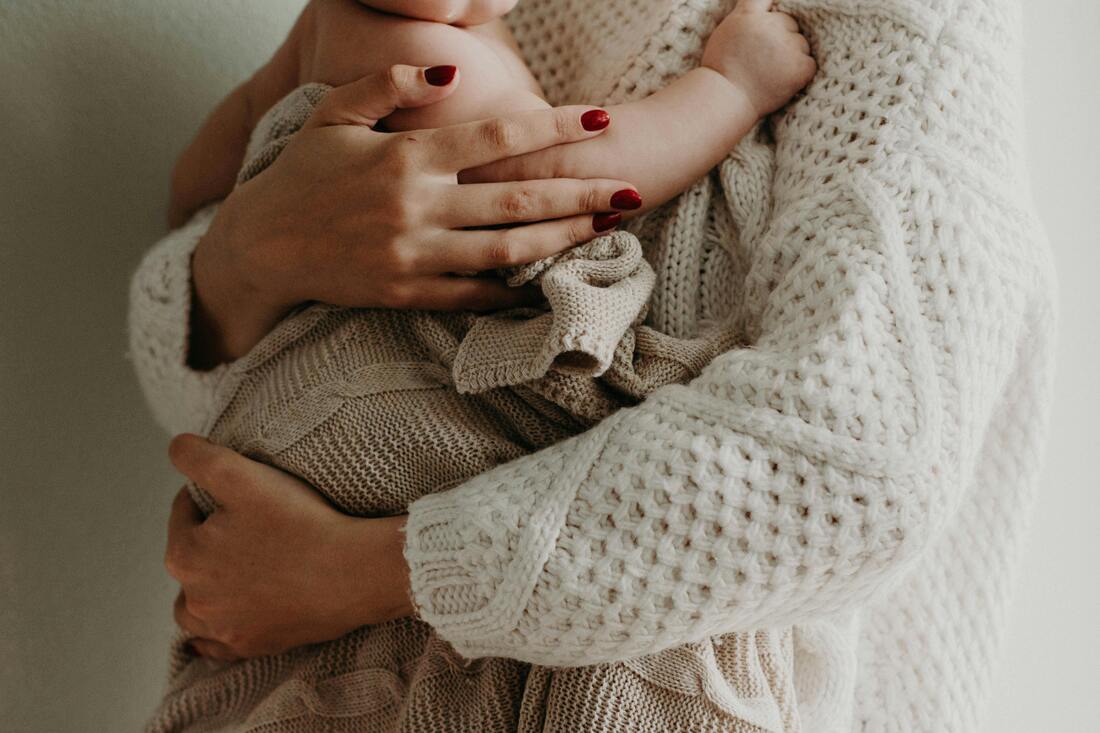




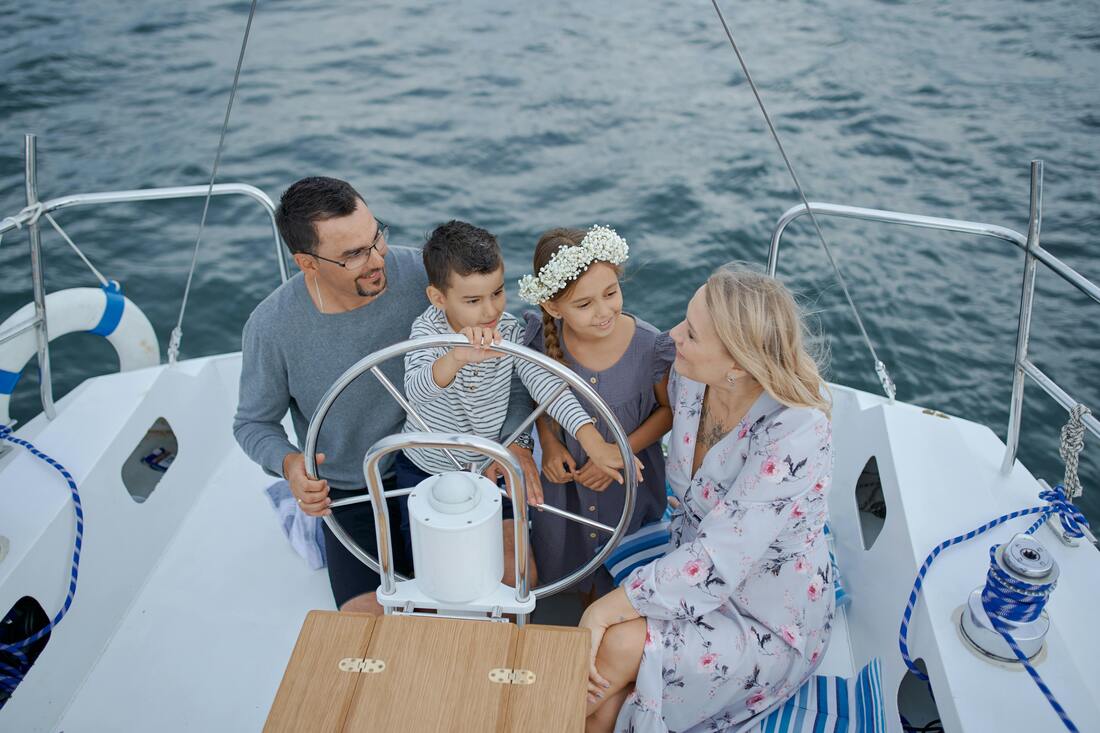
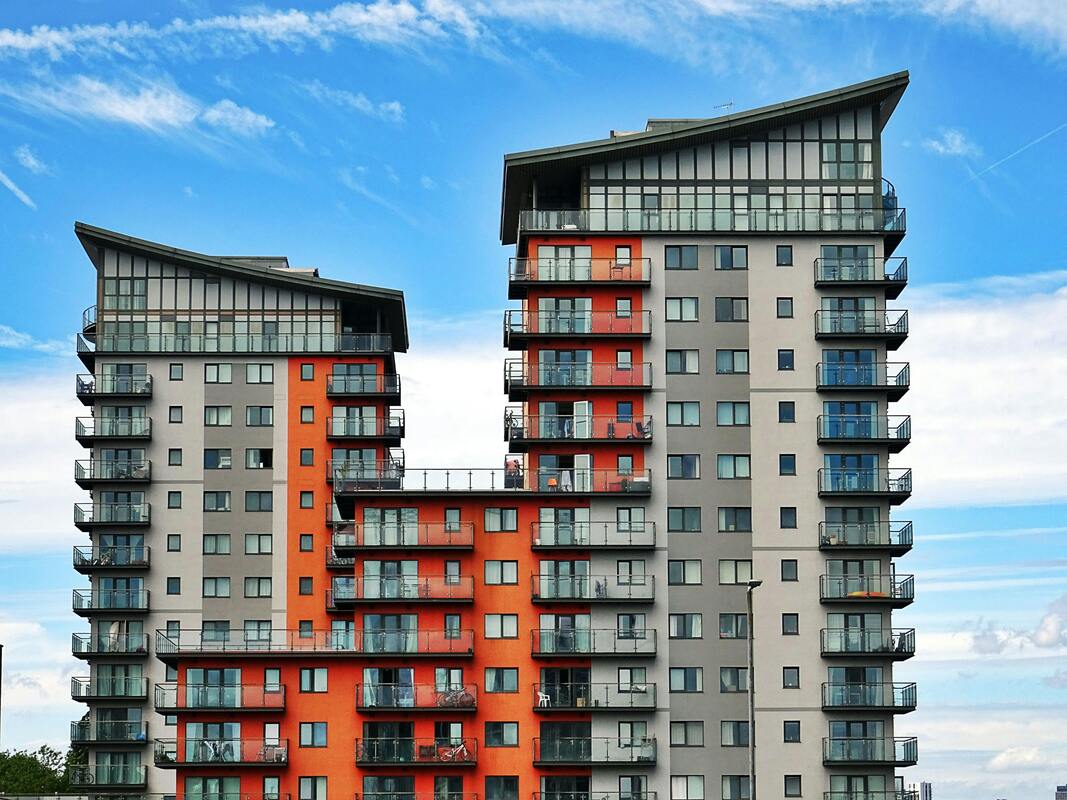






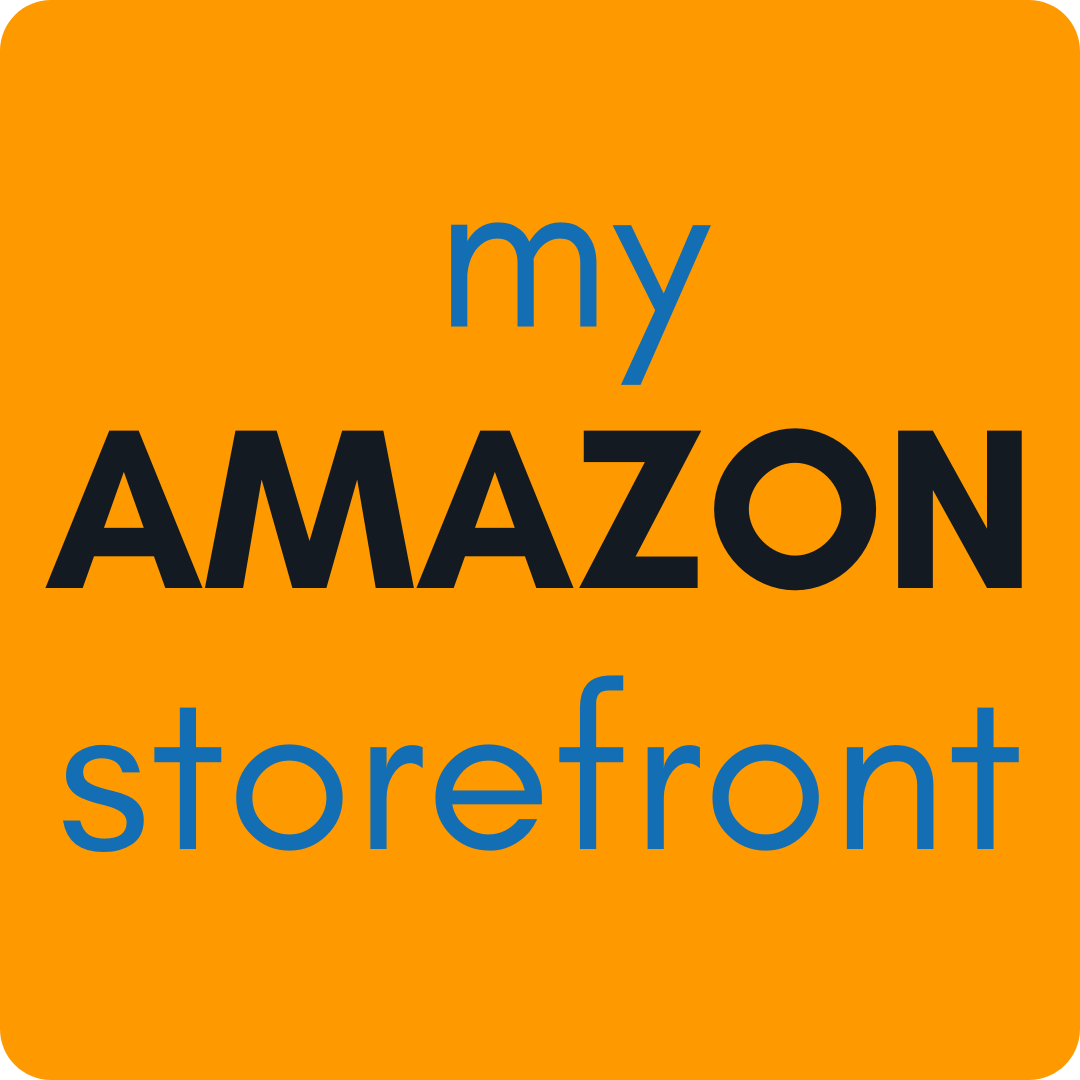


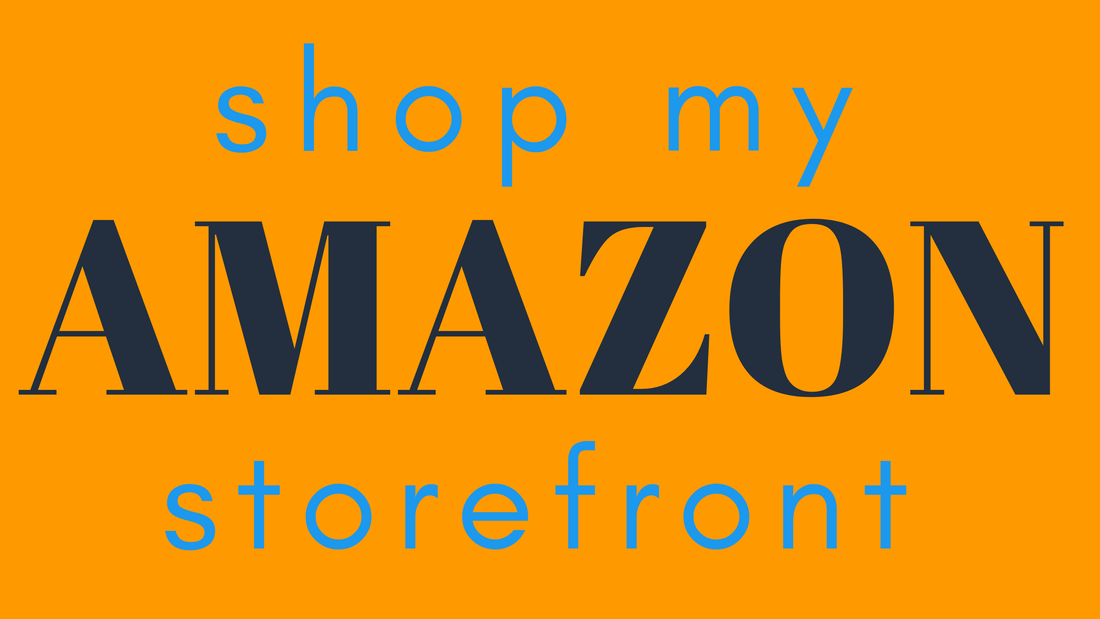
 RSS Feed
RSS Feed
